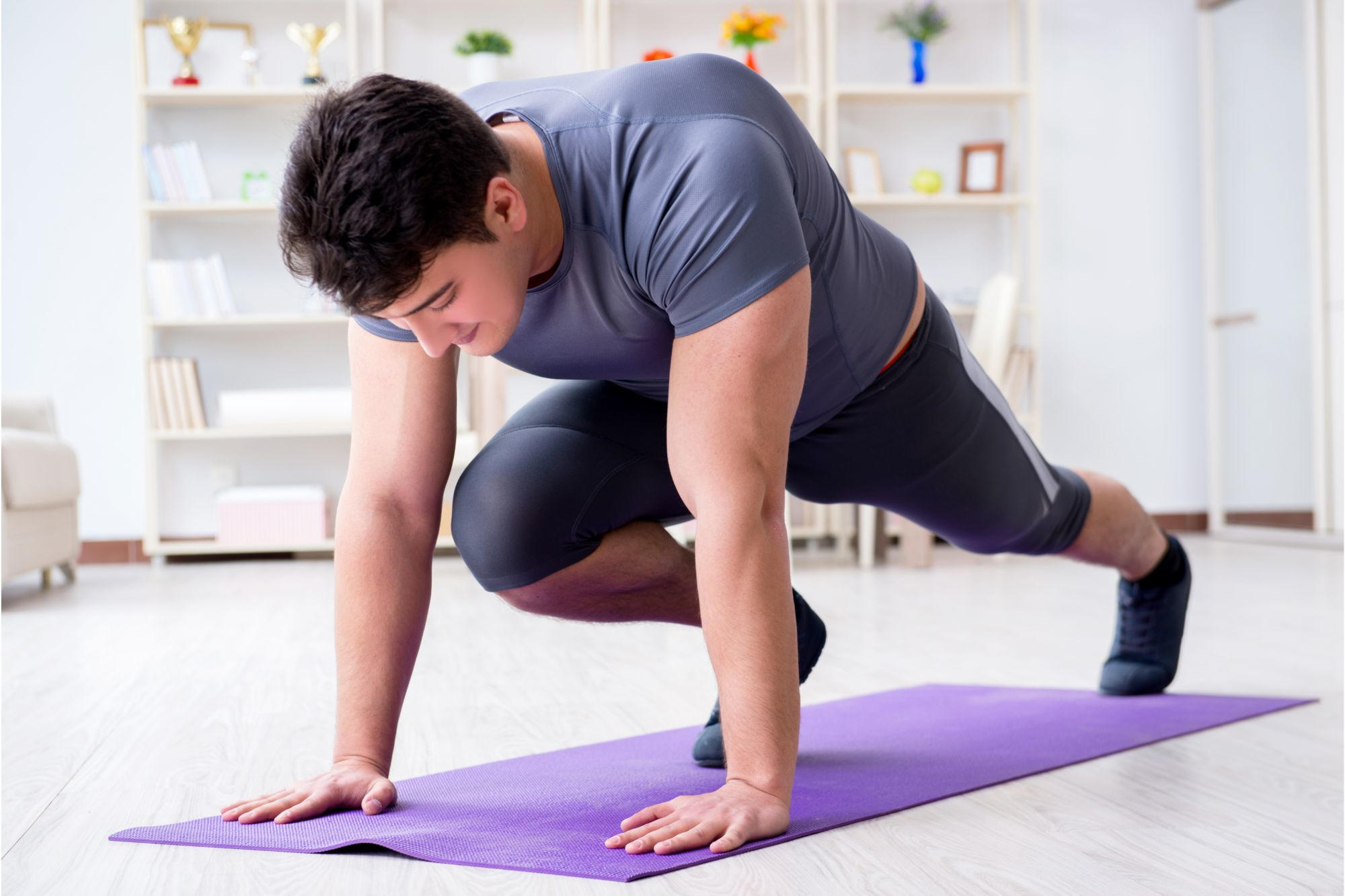
[ad_1]

எலிகளில் காணப்படும் குடல்-மூளை பாதை மனிதர்களிடமும் இருந்தால், உடற்பயிற்சியை மேம்படுத்துவதற்கும் ஒட்டுமொத்த ஆரோக்கியத்தை மேம்படுத்துவதற்கும் இது ஒரு சிறந்த முறையாகப் பயன்படுத்தப்படலாம்.
உடற்பயிற்சி செயல்திறனை அதிகரிக்கும் எலிகளில் குடலிலிருந்து மூளைக்கு செல்லும் பாதையை ஆராய்ச்சியாளர்கள் கண்டுபிடித்துள்ளனர்.
இல் வெளியிடப்பட்ட ஒரு ஆய்வின் படி இயற்கைபெரல்மேன் ஸ்கூல் ஆஃப் மெடிசின் ஆராய்ச்சியாளர்கள் தலைமையில் பென்சில்வேனியா பல்கலைக்கழகம், சில வகையான குடல் பாக்டீரியாக்கள் உடற்பயிற்சி செய்வதற்கான உந்துதலை அதிகரிக்க குடலில் உள்ள நரம்புகளை செயல்படுத்தலாம். எலிகளில் மேற்கொள்ளப்பட்ட ஆய்வில், இந்த பாக்டீரியாக்கள் எவ்வாறு உடற்பயிற்சி செயல்திறனை மேம்படுத்த முடியும் என்பதை விளக்கும் குடலில் இருந்து மூளைக்கு செல்லும் பாதையை அடையாளம் கண்டுள்ளது.
ஆய்வக எலிகளின் குழுவில் இயங்கும் செயல்திறனில் உள்ள மாறுபாடுகள் முக்கியமாக சிறந்த செயல்திறன் கொண்ட எலிகளில் குறிப்பிட்ட குடல் பாக்டீரியா இனங்கள் இருப்பதால் ஏற்படுவதாக ஆய்வில் கண்டறியப்பட்டுள்ளது. இந்த பாக்டீரியாக்கள் உற்பத்தி செய்யும் வளர்சிதை மாற்றங்கள் எனப்படும் சிறிய மூலக்கூறுகளுடன் இந்த விளைவு இணைக்கப்பட்டுள்ளது என்று ஆராய்ச்சியாளர்கள் அடையாளம் கண்டுள்ளனர். இந்த வளர்சிதை மாற்றங்கள் குடலில் உள்ள உணர்ச்சி நரம்புகளை செயல்படுத்துகின்றன, இது உடற்பயிற்சியின் போது உந்துதலைக் கட்டுப்படுத்தும் மூளைப் பகுதியில் செயல்பாட்டை அதிகரிக்கிறது.
“மனிதர்களிடமும் இதேபோன்ற பாதை இருப்பதை உறுதிப்படுத்த முடிந்தால், பொதுவாக பொது சுகாதாரத்தை மேம்படுத்துவதற்கான உடற்பயிற்சியின் அளவை அதிகரிக்க இது ஒரு சிறந்த வழியை வழங்க முடியும்” என்று ஆய்வின் மூத்த எழுத்தாளர் கிறிஸ்டோஃப் தைஸ், பிஎச்.டி., நுண்ணுயிரியல் உதவி பேராசிரியர் கூறினார். பென் மெடிசினில்.
தைஸ் மற்றும் சகாக்கள் உடற்பயிற்சி செயல்திறனை தீர்மானிக்கும் காரணிகளை பரந்த அளவில் தேடுவதற்கு ஆய்வை அமைத்துள்ளனர். அவர்கள் மரபணு வரிசைகள், குடல் பாக்டீரியா இனங்கள், இரத்த ஓட்ட வளர்சிதை மாற்றங்கள் மற்றும் மரபணு ரீதியாக மாறுபட்ட எலிகளுக்கான பிற தரவுகளைப் பதிவு செய்தனர். பின்னர் அவர்கள் விலங்குகள் இயக்கும் தினசரி தன்னார்வ சக்கரத்தின் அளவையும், அவற்றின் சகிப்புத்தன்மையையும் அளவிட்டனர்.
ஆராய்ச்சியாளர்கள் இந்தத் தரவை இயந்திரக் கற்றலைப் பயன்படுத்தி பகுப்பாய்வு செய்தனர், இயங்கும் செயல்திறனில் விலங்குகளின் கணிசமான தனிப்பட்ட வேறுபாடுகளை சிறப்பாக விளக்கக்கூடிய எலிகளின் பண்புகளைத் தேடுகின்றனர். இந்த செயல்திறன் வேறுபாடுகளில் ஒரு சிறிய பகுதியை மட்டுமே மரபியல் கணக்கில் கொண்டிருப்பதைக் கண்டு அவர்கள் ஆச்சரியப்பட்டனர் – அதேசமயம் குடல் பாக்டீரியா மக்கள்தொகையில் உள்ள வேறுபாடுகள் கணிசமாக மிக முக்கியமானதாகத் தோன்றியது. உண்மையில், எலிகளின் குடல் பாக்டீரியாவை அகற்ற பரந்த-ஸ்பெக்ட்ரம் நுண்ணுயிர் எதிர்ப்பிகளை வழங்குவது எலிகளின் இயங்கும் செயல்திறனை பாதியாகக் குறைப்பதை அவர்கள் கவனித்தனர்.
இறுதியில், பென் மற்றும் பிற இடங்களில் ஒரு டஜன் தனித்தனி ஆய்வகங்களை உள்ளடக்கிய பல ஆண்டுகால அறிவியல் துப்பறியும் பணியில், ஆராய்ச்சியாளர்கள் இரண்டு பாக்டீரியா இனங்கள் சிறந்த செயல்திறனுடன் நெருக்கமாக இணைந்திருப்பதைக் கண்டறிந்தனர். யூபாக்டீரியம் மலக்குடல் மற்றும் கொப்ரோகோகஸ் யூடாக்டஸ்கொழுப்பு எனப்படும் வளர்சிதை மாற்றங்களை உருவாக்குகிறது[{” attribute=””>acid amides (FAAs). The latter stimulates receptors called CB1 endocannabinoid receptors on gut-embedded sensory nerves, which connect to the brain via the spine. The stimulation of these CB1 receptor-studded nerves causes an increase in levels of the neurotransmitter dopamine during exercise, in a brain region called the ventral striatum.
The striatum is a critical node in the brain’s reward and motivation network. The researchers concluded that the extra dopamine in this region during exercise boosts performance by reinforcing the desire to exercise.
“This gut-to-brain motivation pathway might have evolved to connect nutrient availability and the state of the gut bacterial population to the readiness to engage in prolonged physical activity,” said study co-author, J. Nicholas Betley, Ph.D., an associate professor of Biology at the University of Pennsylvania’s School of Arts and Sciences. “This line of research could develop into a whole new branch of exercise physiology.”
The findings open up many new avenues of scientific investigation. For example, there was evidence from the experiments that the better-performing mice experienced a more intense “runner’s high”—measured in this case by a reduction in pain sensitivity—hinting that this well-known phenomenon is also at least partly controlled by gut bacteria. The team now plans further studies to confirm the existence of this gut-to-brain pathway in humans.
Apart from possibly offering cheap, safe, diet-based ways of getting ordinary people running and optimizing elite athletes’ performance, he added, the exploration of this pathway might also yield easier methods for modifying motivation and mood in settings such as addiction and depression.
Reference: “A microbiome-dependent gut–brain pathway regulates motivation for exercise” by Lenka Dohnalová, Patrick Lundgren, Jamie R. E. Carty, Nitsan Goldstein, Sebastian L. Wenski, Pakjira Nanudorn, Sirinthra Thiengmag, Kuei-Pin Huang, Lev Litichevskiy, Hélène C. Descamps, Karthikeyani Chellappa, Ana Glassman, Susanne Kessler, Jihee Kim, Timothy O. Cox, Oxana Dmitrieva-Posocco, Andrea C. Wong, Erik L. Allman, Soumita Ghosh, Nitika Sharma, Kasturi Sengupta, Belinda Cornes, Nitai Dean, Gary A. Churchill, Tejvir S. Khurana, Mark A. Sellmyer, Garret A. FitzGerald, Andrew D. Patterson, Joseph A. Baur, Amber L. Alhadeff, Eric J. N. Helfrich, Maayan Levy, J. Nicholas Betley and Christoph A. Thaiss, 14 December 2022, Nature.
DOI: 10.1038/s41586-022-05525-z
The study was funded by the National Institutes of Health, the Pew Charitable Trust, the Edward Mallinckrodt, Jr. Foundation, the Agilent Early Career Professor Award, the Global Probiotics Council, the IDSA Foundation, the Thyssen Foundation, the Human Frontier Science Program, and Penn Medicine, including the Dean’s Innovation Fund.
[ad_2]